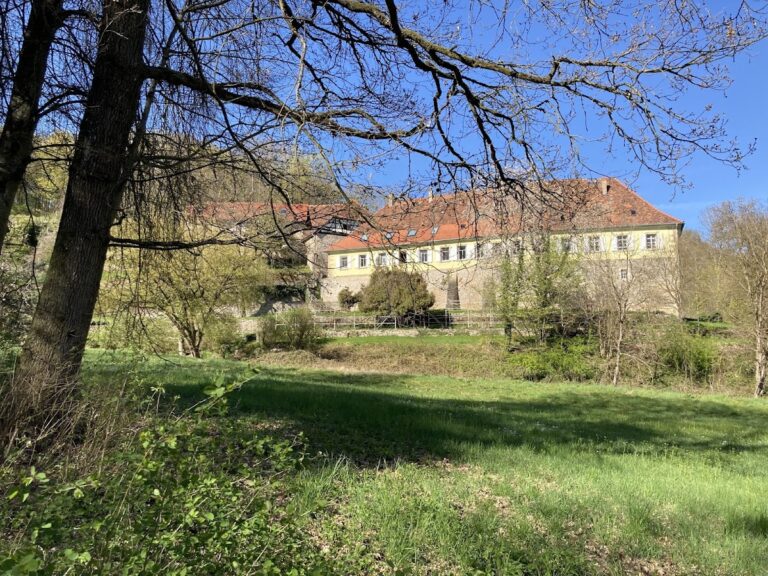Schloss Duttenberg: A Historic Castle and Estate in Germany
Visitor Information
Google Rating: 4.4
Popularity: Very Low
Google Maps: View on Google Maps
Country: Germany
Civilization: Unclassified
Remains: Military
History
Schloss Duttenberg is located near the municipality of Bad Friedrichshall in Germany. The castle originated as a manorial estate constructed by early medieval Frankish settlers. Its position on a ridge overlooking the Jagst valley provided strategic and agricultural advantages.
The site first appears in written records around 798 or 799 under the name “Dudunburc,” while the wider area was noted earlier, in 778, as “Tutumer marca.” These early references reflect its importance during the period of Frankish territorial expansion in the region. Initially, Schloss Duttenberg served as a noble seat overlooking a nearby settlement by the Kreuzkapelle chapel, marking the shift of local habitation toward the elevated ridge.
During the 14th century, the castle was owned by the Lords of Weinsberg as a possession of the Holy Roman Emperor. They granted the estate as a fief to various noble families, among them the Lords of Bieringen in the 14th century and later, in the 15th and 16th centuries, to the Lords of Wittstatt. When the Wittstatt line ended in 1586, control of Schloss Duttenberg passed to the Palatinate Counts of the Rhine. These counts did not hold the estate themselves but instead leased it to local tenants.
By the end of the 16th century, the Teutonic Order, a medieval Catholic military and religious order, acquired part of the property. Over the next several decades, they expanded their holdings until, by 1668, the Order owned the entire complex along with about 90 acres of surrounding lands. However, in 1673, disaster struck when a fire damaged the manor house, destroying its two upper timber-framed floors.
In the 18th century, the Teutonic Order began offering hereditary leases to local farmers for parts of the estate, reflecting a shift toward agricultural use. The manor itself was sold into private hands in 1769 to Joseph Reichert, signaling further secular ownership beyond religious control. In 1860, the property changed hands again to the Reiß family, after which it became commonly known as Reißenhof.
Around the year 1860, significant renovations took place. A deteriorating distillery on the grounds was demolished, and a Renaissance-era bay window on the manor’s western facade was removed. These changes gave the manor house the simple and uniform appearance it has today, marked by plain sandstone window frames replacing earlier ornamental elements.
Over the centuries, Schloss Duttenberg’s fortified origins faded as the site was used primarily for agriculture, leaving only faint traces of its medieval defensive character.
Remains
The castle complex at Schloss Duttenberg was originally enclosed within a rectangular fortification located at the eastern outskirts of Duttenberg. This walled area included the main manor house, an old wine press known locally as a Kelter, and several buildings serving agricultural and economic purposes. The layout demonstrates how residential, ecclesiastical, and farming structures were closely integrated within the fortified precinct.
On the western side of the castle’s enclosure lies St. Kilian’s Church (Kilianskirche), which itself was surrounded by a separate wall. Beyond this church, remnants of the village with partial fortifications can be found. These village defenses are dated to around 1460 and are attributed to Hans von Sickingen, a regional figure who oversaw their construction.
From the castle’s defenses, some fragments of the enclosing walls and a moat remain visible, especially along the northeastern side. Additionally, the base, or stump, of a former tower stands as evidence of the site’s original fortifications. These features outline the castle’s former military functions even as the estate evolved over time.
The manor house, once topped by multiple upper floors built of timber framing, lost these upper stories in the fire of 1673. Following repairs and later renovations, its current form is characterized by simple sandstone window frames. Notably, a Renaissance bay window that once adorned the western side was removed in the mid-19th century, altering the building’s facade significantly.
Today, the traces of Schloss Duttenberg’s fortified past are modest but tangible, revealing a site where residential life, worship, and agricultural activity intertwined within a defined, walled space. Photographic records document the manor and remaining structures, showing the slow transformation from medieval castle to rural estate.










